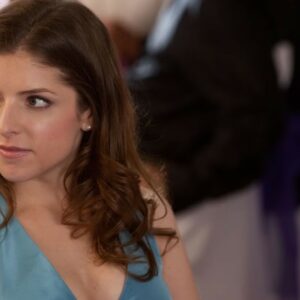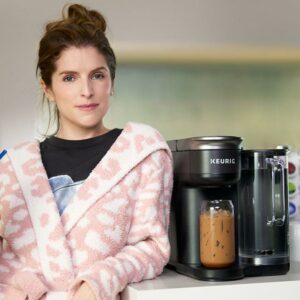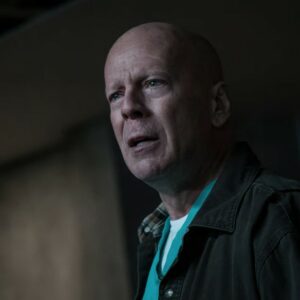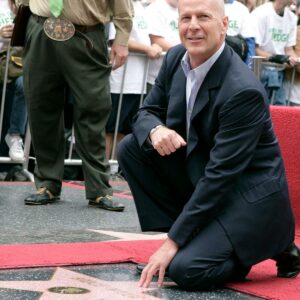There are artists who make music, and then there are artists who live their music, breathing life into every lyric, beat, and performance. Mary J. Blige undeniably belongs in the latter category. Since her debut in the early ’90s, Blige has cultivated a style that extends far beyond the vocal booth and into the visual realm of music videos. The Queen of Hip-Hop Soul doesn’t just sing about struggle, resilience, and empowerment—she embodies these themes through her carefully curated looks and sartorial choices. Her styling is a powerful medium that complements and amplifies the emotional depth of her music.
In the era of music videos as artistic statements, where visuals became almost as important as the music itself, Blige stands as a visionary. Whether she’s swathed in fur coats, dripping in gold jewelry, or rocking her signature blonde hair, every element of her appearance communicates something vital about the music she’s delivering. To understand Mary J. Blige’s impact as an artist, it’s essential to explore how her unique styling choices convey the themes of her music, making her videos not just extensions of her songs, but cultural touchstones in their own right.
The Rise of a Style Icon: From “Real Love” to “No More Drama”
When Mary J. Blige burst onto the scene with What’s the 411? in 1992, she did more than introduce a new sound—she introduced a new image of what it meant to be a Black female artist in the R&B and hip-hop world. The early ’90s were dominated by polished pop princesses and sultry R&B divas, but Blige brought something different: a streetwise edge that fused the glamour of soul with the grit of the Bronx. In her “Real Love” video, Blige sported oversized hockey jerseys, baggy jeans, and combat boots, looks that drew directly from the streets while still feeling undeniably fresh. She was one of the first to blend high fashion with streetwear—a look that has since become ubiquitous in pop culture, but back then, it was revolutionary.
Blige’s style in these early videos wasn’t just about aesthetics; it was a visual representation of the rawness and honesty that characterized her music. Songs like “Real Love” and “You Remind Me” were about searching for authenticity in relationships, and her clothes reflected that search. She wasn’t dressed up to play a part—she was dressed down to tell her truth. This authenticity resonated with fans who saw themselves in her struggles, and her styling became a significant part of her appeal. It was as if every oversized jacket or pair of Timberlands she wore was a declaration: This is who I am, take it or leave it.
As Blige’s career evolved, so did her style, but it always remained deeply tied to the themes of her music. By the time she released No More Drama in 2001, she had gone through very public struggles with addiction and relationships, and her styling reflected the hard-earned wisdom she had gained. In the video for the title track, Blige appears in a simple, sleek dress, her hair pulled back, her face makeup-free. The stripped-down look was a stark contrast to the bling-heavy visuals of her earlier work, signaling a new chapter of clarity and self-acceptance. The minimalism of her look allowed the raw emotion of the song to take center stage, showing that sometimes, the most powerful statement you can make is through simplicity.
The Power of Visual Storytelling: “Family Affair” and “Be Without You”
Blige’s music videos have always been more than just performances; they are narratives in their own right. Her styling serves as a visual shorthand for the stories she’s telling, whether it’s about personal empowerment, heartache, or resilience. Take, for instance, the video for “Family Affair,” one of her biggest hits and a celebratory anthem of independence and self-love. In the video, Blige is adorned in metallics and bold, futuristic looks, flanked by dancers in a slick, modern setting. The styling here isn’t just about looking good—it’s about conveying the freedom and confidence that the song embodies. The futuristic, almost otherworldly aesthetic signals a departure from the past and an embrace of the new—a recurring theme in Blige’s music.
Similarly, in the video for “Be Without You,” Blige uses fashion to underscore the emotional weight of the song. The video, which tells the story of a woman struggling to maintain a relationship, is a study in contrasts. Blige switches between soft, feminine looks—flowy dresses, delicate jewelry—and harder, more masculine pieces like leather jackets and boots. These contrasting styles mirror the emotional conflict of the song, illustrating the push and pull of vulnerability and strength that defines Blige’s music. Her styling here serves as a visual representation of the internal battle she’s singing about, making the video a deeper, more layered experience.
Blige’s ability to use fashion as a narrative device extends beyond just individual videos—it’s a thread that runs through her entire career. Whether she’s telling a story of triumph, heartbreak, or redemption, her styling choices always enhance the narrative, making her music videos more than just visuals—they are extensions of her songs, deepening the emotional impact of her music.
The Evolution of Blige’s Style: From Streetwear to High Fashion
As Blige’s music has evolved, so has her style. What started as a blend of streetwear and hip-hop fashion has transformed into something much more diverse and nuanced, reflecting the evolution of Blige as both an artist and a woman. Over the years, Blige has embraced high fashion in a way that feels both aspirational and accessible. She’s worked with some of the top designers in the world, including Marc Jacobs, Roberto Cavalli, and Gucci, but she’s never lost the edge that made her a style icon in the first place.
In recent years, Blige has embraced a more glamorous aesthetic, often appearing in red carpet-worthy gowns and designer pieces in her music videos. But even as she’s adopted a more high-fashion look, she’s maintained the authenticity that has always been at the core of her style. Her music videos continue to reflect the themes of her music, whether she’s singing about empowerment, love, or personal growth.
In the video for “Thick of It,” for example, Blige opts for an elegant, monochrome look—complete with a chic white suit and sleek ponytail—that reflects the strength and resilience she sings about. The simplicity of her outfit is juxtaposed with the complexity of the emotions she conveys, showing how Blige continues to use fashion to enhance the storytelling in her music.
Blige’s ability to blend high fashion with authenticity is perhaps best exemplified in her video for “U + Me (Love Lesson).” In the video, Blige wears a series of sleek, modern outfits that convey both vulnerability and strength. The video is a reflection of the song’s themes of heartbreak and healing, with Blige’s styling choices adding depth and complexity to the narrative. The result is a video that feels both raw and polished, a perfect representation of Blige’s unique blend of glamour and grit.
Style as Empowerment: Blige’s Lasting Influence on Fashion and Music Videos
Mary J. Blige’s influence on fashion and music videos extends far beyond her own career. She has paved the way for a new generation of artists who use fashion as a form of empowerment and self-expression. Artists like Rihanna, Beyoncé, and Cardi B have all taken cues from Blige’s fearless approach to style, using their music videos to make bold statements about who they are and what they stand for.
Blige’s impact on the fashion world is equally significant. She has been a muse for designers like Alexander Wang and Karl Lagerfeld, and her influence can be seen in the work of fashion houses from Balenciaga to Fenty. Blige’s style is a testament to the power of fashion as a form of self-expression and empowerment, and her music videos continue to inspire and influence artists across genres.
Blige’s ability to seamlessly blend music, fashion, and storytelling is what sets her apart from other artists. Her music videos are not just a visual accompaniment to her songs—they are a vital part of her artistic expression, adding depth and complexity to her music and making her a true icon in the worlds of both fashion and music.
Conclusion: Mary J. Blige—The Unstoppable Icon
Mary J. Blige is more than just a musician—she is an artist who has redefined what it means to be a Black woman in the music industry. Through her bold and unapologetic style, Blige has created a visual language that is as powerful and influential as her music. Her music videos are a testament to her ability to use fashion as a form of storytelling, creating a lasting impact on the worlds of both music and fashion.
Blige’s influence can be seen in the work of countless artists who have followed in her footsteps, using fashion as a means of empowerment and self-expression. Her legacy is one of strength, resilience, and authenticity—a legacy that continues to inspire and empower people around the world.
As she continues to evolve as an artist, Mary J. Blige remains a true icon, using her music and style to tell stories that resonate with people on a deep and personal level. Whether she’s rocking streetwear or high fashion, Blige is always unapologetically herself, and that is what makes her a true le





